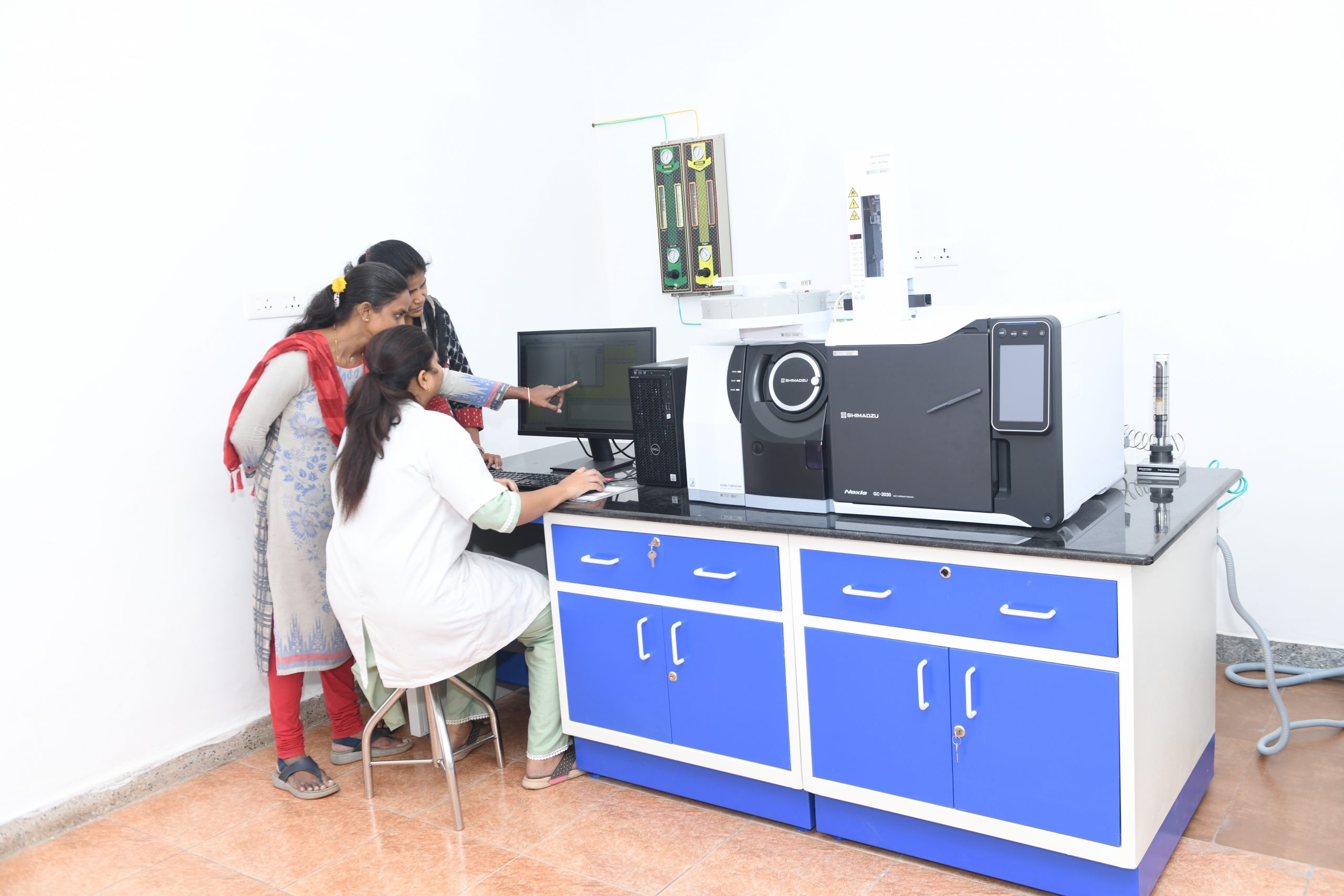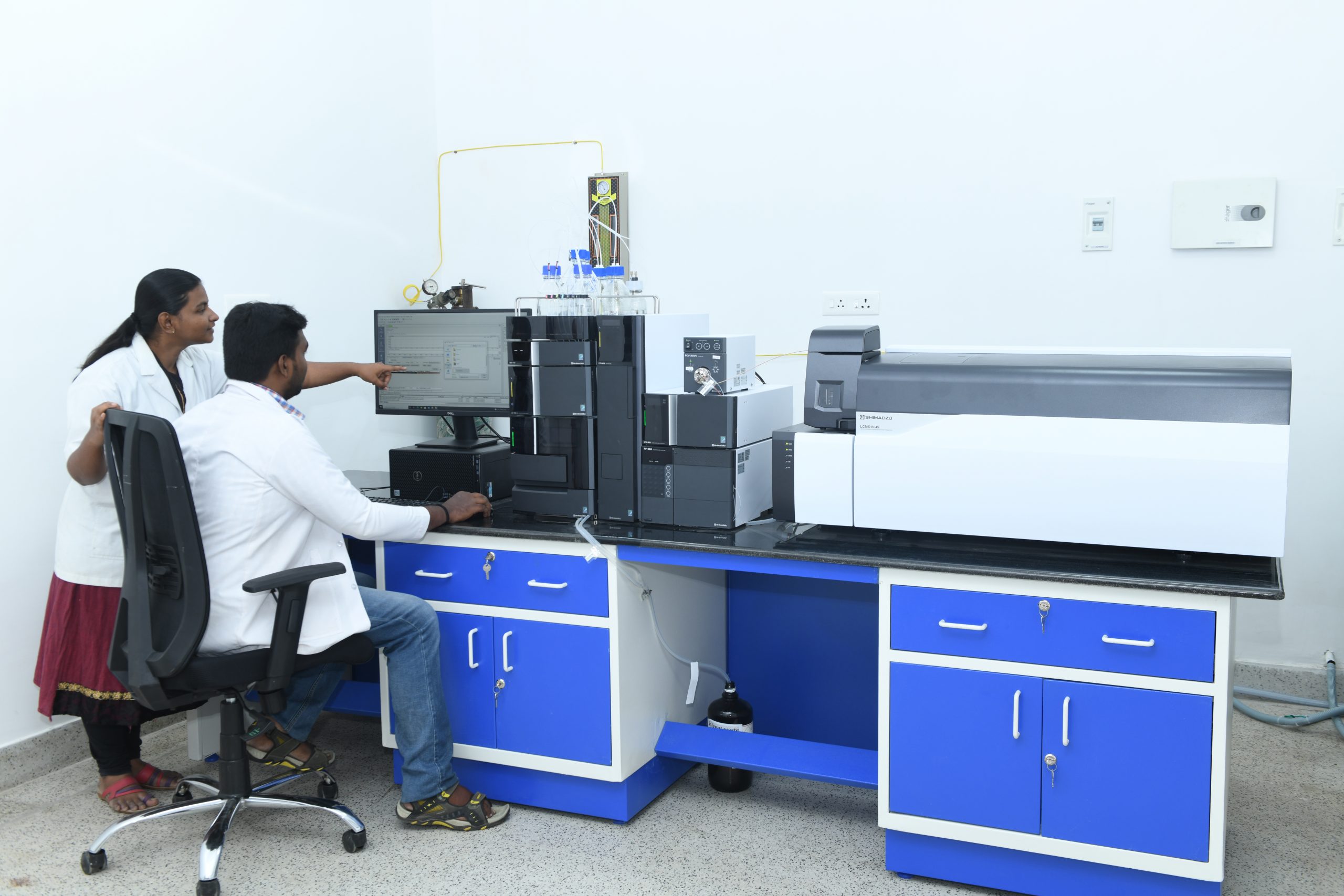Analytical Facility charges
About
The Biotech Council for Centre of Excellence in Biotechnology (CoEB) was established in TNAU, Coimbatore funded by Tamil Nadu government. The instrument facility was established at CoEB to initiate high end research on genomics and metabolomics by the researchers. The equipments viz., Preparative HPLC System, UHPLC system, Nano LC System, MALDI TOF/TOF Mass Spectrometer, LCMS-8045 Triple Quadrupole Mass Spectrometer and GCMS TQ-8040 NX Triple Quadrupole Mass Spectrometer under High throughput Platform for Proteomics and Metabolomics.
Goals
- To position Tamil Nadu as a leader on the global biotechnology map
- Fostering investment and innovation in the biotechnology sector
- Providing an enabling environment and world class infrastructure for research, education in biotechnology
NANO LC coupled with Accuspot – MALDI TOF/TOF (Shimadzu, Axima Performance)

- MALDI is a soft ionization that involves a laser striking a matrix of small molecules to make the analyte molecules into the gas phase without fragmenting or decomposing them.
- Automated liquid chromatography tandem mass spectrometry (LC-MALDI MS/MS) is a well-established technique for identification of components from complex mixtures in shotgun proteomics experiments
- MALDI is appropriate to analyze bio-molecules like peptides, lipids, saccharides, or other organic macromolecules
- Intact Mass determination by mascot server
- Peptide mass fingerprinting
- Oligonucleotide analysis
- Shotgun proteomic
GC-MSMS (Shimadzu Nexis GC – 2030 MS -TQ8040 NX)

- Gas Chromatography – Mass Spectrometry (GC-MSMS) is a hyphenated analytical technique that combines the separation properties of gas chromatography with the detection feature of mass spectrometry to identify different substances within a test sample.
- GCMS is used to separate the volatile and thermally stable substitutes in a sample and fragments the analyte to be identified on the basis of its mass. The ultra low detection of compounds and superior performance is achieved by triple quadrupole mode.
- Analysis of volatile and aromatic compounds
- Separation, Identification and Quantitative analysis of small molecules
UHPLC coupled with LC-MSMS – N series with PDA & Fluorescence detector (Shimadzu 8045)
 The LC-MS/MS is a powerful tool for the detection of residual chemical compounds, confirmatory identification of small organic molecules, confirmation, quantification of contaminants and adulterants in pharmaceutical and food samples.
The LC-MS/MS is a powerful tool for the detection of residual chemical compounds, confirmatory identification of small organic molecules, confirmation, quantification of contaminants and adulterants in pharmaceutical and food samples.- Separation of compounds, Qualitative and quantitative analysis
- Purity profiling
- Non volatile, polar molecules (ESI) or moderate polar molecules (APCI)
- Mass range 100-2000 Da
- Provide [M+H]+ ion or adduct ions
HPLC – P-series Semi preparative System with RID, PDA & Fraction Collector (Shimadzu)

- HPLC is used to separate and refine high-purity target compounds from a mixed solution after a synthesis reaction or from natural extracts.
- A preparative system HPLC is used to separate and collect high-purity compounds for subsequent evaluation, analysis, and processing in the shortest possible time
- Photodiode Array (PDA) and Refractive Index Detectors (RID) for secondary metabolite analysis
Analytical Charges
| Analysis / Service | Unit | For TNAU (Intra) | Other Academic Institutions | Industries / Private | ||||||
| Unit cost | GST (18%) | Total | Unit cost | GST (18%) | Total | Unit cost | GST (18%) | Total | ||
| GC-MS Volatile profiling + Data acquisition | Per sample | 2000 | 0 | 2000 | 2500 | 450 | 2950 | 3000 | 540 | 3540 |
| GC-MS metabolite profiling+Data aquisition | Per sample | 3000 | 0 | 3000 | 3750 | 675 | 4425 | 4500 | 810 | 5310 |
| LC-MS/MS | Per sample | 3000 | 0 | 3000 | 4000 | 720 | 4720 | 5000 | 900 | 5900 |
| HPLC (Standard+1 Sample) | Per sample | 2000 | 0 | 2000 | 2500 | 450 | 2950 | 3000 | 540 | 3540 |
| MALDI-TOFF | Per Run | 2000 | 0 | 2000 | 3000 | 540 | 3540 | 4000 | 720 | 4720 |





